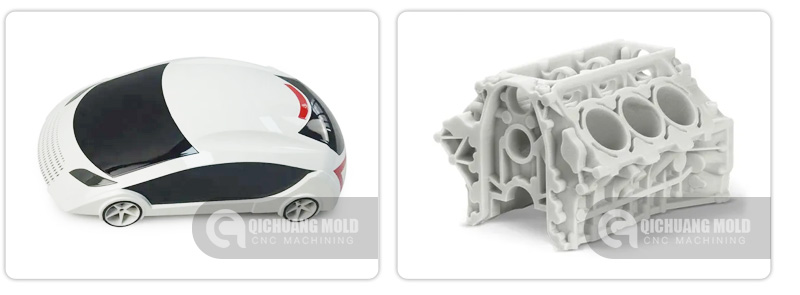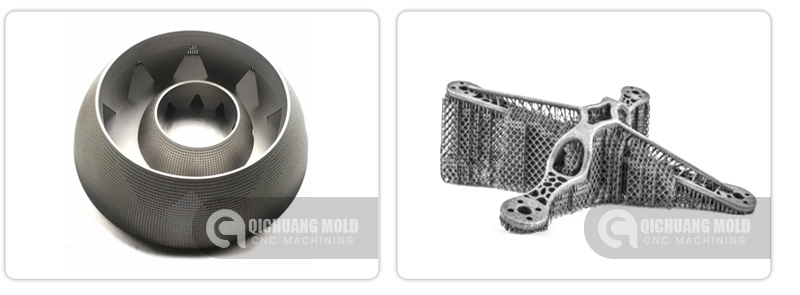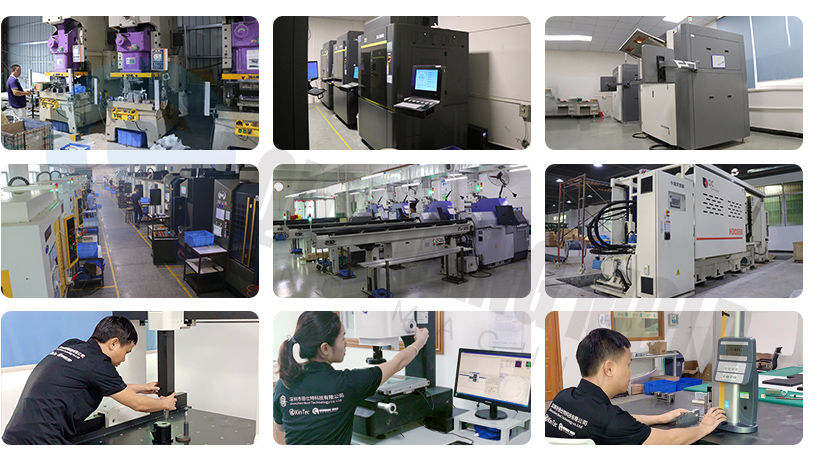News
Rapid Production – CNC vs 3D
Rapid Production – CNC vs 3D
Should I be using 3D Printing? Maybe I should be looking at CNC Machining? Or maybe I should go right into injection molding? There is no simple answer to these question without being able to review a specific projects needs. So instead let’s look at some of the more common rapid prototype/production technologies, along with some pros and cons which may help you understand which manufacturing option is a good fit for your project. Feel free to contact us for a free project review anytime at info@qc-mold.com Continue reading to learn more.
CNC Machining – Start with a solid block of production grade plastic or metal that is clamped into place in a CNC mill and start cutting away the material to reveal a final design that has been pre-programmed into the CNC machine. In short that is how CNC machining works. This subtractive process produces parts/products with superior strength and surface finishes when compared to additive processes (3D Printing). There are a full range of production grade plastics and metals that you can choose from and test to see what material gives you the right feel for your part/product. Materials that allow you to test things like tensile strength, heat resistance, impact resistance, chemical resistance and more. You will receive parts that are made to a very high precision tolerances, ideal for form, fit and function testing.
Prototype parts/products can be delivered in as little as 1 or 2 days. The only thing needed to start is a 3D file that your CNC shop can use to start your project. Sometimes undercuts can be difficult but the better CNC machine shops will have a solution for most designs.
Pros – Parts/products are very robust as they are solid pieces fabricated from a subtractive process, using production grade materials. Wide range of metal and plastic materials to choose from. Great surface finish options.
Cons – Sometimes geometry limitations can be associated with CNC machining but these can often be overcome with experienced shops. There is a perceived higher cost associated with CNC machining when say compared to 3D Printing. But if you need any kind of strength or superior surface finishes for your part this additional cost often becomes negligible.

SLA (3D Printing) – an additive process that builds parts in a pool of UV-curable photopolymer resin using a computer controlled laser. The laser is used to trace out and cure a cross-section of the part design on the surface of the liquid resin. The solidified layer is then lowered just below the surface of the liquid resin and the process is repeated. Each newly cured layer adheres to the layer below it. SLA is the original 3D Printing technology.
Pros – Cost is quite competitive and the technology is widely used. Complex geometries and great surface finishes when compared to other 3D printing options. Good option when you need a master part made.
Cons – Parts are not very strong so not suitable for function testing and can become even more brittle over time if parts are subjected to sunlight.
SLS (3D Printing) – Powdered material is fused together by lasers to make a solid part and then the process is repeated layer by layer to produce a finished part. SLS parts can be more durable than SLA parts but the surface finish will feel rougher with a distinct grain. SLS parts can be pretty strong but they are considerably weaker than parts made through subtractive CNC machining or injection molding. There are a number plastics you can choose from but Nylon based materials are the most common materials used.
Pros – Complex geometries are possible, good for form and fit testing. Parts tend to be more durable and a bit more accurate than SLA parts. No set up cost, can print right from your 3D file (which may need converting).
Cons – Typically, not great for functional testing if strength of part is required. Parts have a rougher feel and may need post production if perfect finishes are desired.

DMLS (3D Printing) – Direct metal laser sintering is an additive manufacturing process that will deliver you metal prototype/production parts. DMLS uses a laser that draws on metal powder, melting or welding the powder into a solid piece, a blade then adds more powder and the process is repeated layer by layer to create your part/product. It is this layering process which makes this an additive technology. DMLS can use a lot of different alloys and if you design with manufacturability in mind you can review the printed parts/products to determine if metal injection molding is a process you want to consider moving forward with for mass production.
Pros – DMLS delivers very strong parts that can be used for functional testing. As with all additive processes that produce parts layer by layer it is possible to design internal features that otherwise could not be machined or cast.
Cons – Part cost can be quite high and the surface finish can be rough.
Timing, budgets, application and a 100 other factors will influence what rapid manufacturing process you choose or lean towards. For new products it is not a bad idea to invest in a couple of different prototype/production part processes to get a feel for what works best for your design. Not sure how to proceed? No problem, that’s why we are here:)
info@qc-mold.com

Categories
Latest News
- How can Chinese CNC machining 2025-04-22
- Why CNC Machining is the Best 2024-08-23
- CNC Machining Cost Calculation2024-08-22
- How to Find a Manufacturer for2024-08-01
- Plastic molding: definition, p2024-07-10
Contact
CONTACT USContact:Joy Ren
Phone: +86 18598031605
Email:cillian@qc-mold.com
Whatsapp+86 18598031605
Add:No.3 Huayuan Road, Longhua District,Shenzhen,China

 Eva
Eva